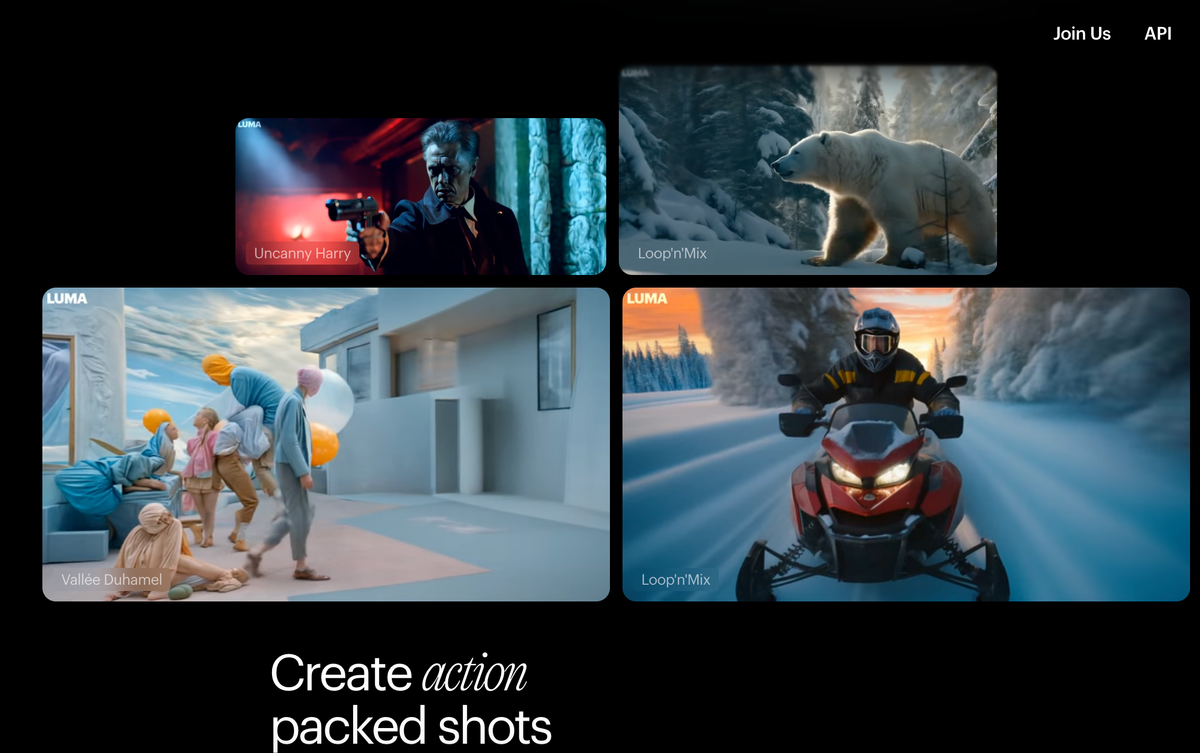Comprehensive Analysis of Luma AI's Dream Machine and Unlimited Generations

Introduction
Luma AI's Dream Machine has emerged as a significant player in the field of AI-generated video content. This text-to-video generator has been designed to democratize video creation, making it accessible to a wide range of users, from amateur creators to professional marketers. The Dream Machine's ability to generate high-quality videos using simple text prompts has positioned it as a formidable competitor to other AI video generators, such as OpenAI's Sora and Runway ML. This report delves into the capabilities, limitations, and pricing models of Luma AI's Dream Machine, with a particular focus on the concept of unlimited generations.

Capabilities of Luma AI's Dream Machine
Luma AI's Dream Machine is a text-to-video generator that leverages advanced algorithms to produce high-resolution videos. It is capable of generating cinema-grade videos in 1080p resolution, making them suitable for professional use (All Things How). The platform supports multiple aspect ratios, allowing users to create videos for various purposes, including marketing, education, and social media (All Things How).
The Dream Machine employs a spatiotemporal joint attention mechanism to accurately simulate real-world physical interactions and complex actions, resulting in natural-looking videos (All Things How). This capability is particularly beneficial for creating videos with realistic character movements and detailed scenes.
Limitations and Challenges
Despite its impressive capabilities, the Dream Machine is not without its limitations. One of the most notable issues is the "Janus problem," where the platform displays multiple views of an object in different directions instead of providing a consistent 3D output (All Things How). Additionally, users have reported problems with morphing, text, and unnatural movement, which are common challenges in text-to-video generation (Creative Bloq).

The Dream Machine also has a ten-second limit on video length and lacks sound, which may evolve over time as the technology advances (MS Power User). These limitations highlight the early-stage nature of AI video generation and the potential for future improvements.
Pricing and Generations
Luma AI offers a tiered pricing model for the Dream Machine, with both free and paid plans available. The free plan allows users to generate up to 30 videos per month, with a restriction of 5 generations per day due to high demand (All Things How). Paid plans start at $29 per month, offering faster generation times and higher generation limits (Bay Area Telegraph).
In terms of cost-effectiveness, Luma charges $0.20 for five seconds of footage, which is significantly cheaper than Runway's $1.20 for the same duration (ChatPlayground AI). However, Luma lacks an unlimited plan, making it less suitable for users who require extensive video generation (ChatPlayground AI).
Comparison with Competitors
Luma AI's Dream Machine is often compared to other AI video generators, such as OpenAI's Sora and Runway ML. While Sora is not yet available to the general public, Luma has gained a competitive edge by offering a free, publicly accessible platform (Bay Area Telegraph). This accessibility has allowed Luma to build a community around its platform and potentially prompt OpenAI to accelerate the release of Sora (Creative Bloq).
In terms of video quality, Luma's Dream Machine is praised for its realistic animations and coherent motion, although some imperfections remain (ChatPlayground AI). Runway, on the other hand, offers an unlimited plan, which may be more appealing to high-volume users despite its higher cost (ChatPlayground AI).
Potential Applications and Future Prospects
The Dream Machine's ability to generate high-quality videos using simple prompts opens up new possibilities for content creation across various fields. It is particularly useful for content creators, businesses, and marketers who need to produce engaging video content quickly and cost-effectively (Dev.to).
As AI video generation technology continues to evolve, it is likely that the Dream Machine will see improvements in video length, sound integration, and overall quality. The planned release of APIs and plugins for creative software could further enhance the platform's capabilities and integration into existing workflows (Creative Bloq).
Conclusion
Luma AI's Dream Machine represents a significant advancement in AI video generation, offering a user-friendly and accessible platform for creating high-quality videos. While it faces challenges such as the Janus problem and limitations in video length and sound, its competitive pricing and realistic output make it a valuable tool for a wide range of users. As the technology matures, the Dream Machine is poised to play a crucial role in the future of content creation, potentially transforming how videos are produced and consumed.
References
- All Things How. (n.d.). Here's everything you need to know about Sora's latest rival, Dream Machine, from Luma AI. Retrieved from https://allthings.how/heres-everything-you-need-to-know-about-soras-latest-rival-dream-machine-from-luma-ai/
- Bay Area Telegraph. (2024, June 20). I tested Luma’s new AI video generator, and it’s mind-blowing. Retrieved from https://bayareatelegraph.com/2024/06/20/i-tested-lumas-new-ai-video-generator-and-its-mind-blowing/
- ChatPlayground AI. (n.d.). The ultimate comparison: Runway vs. Luma AI video generators. Retrieved from https://www.chatplayground.ai/blog/the-ultimate-comparison-runway-vs-luma-ai-video-generators
- Creative Bloq. (n.d.). Luma Dream Machine makes AI video open to all. Retrieved from https://www.creativebloq.com/ai/luma-dream-machine-makes-ai-video-open-to-all
- Dev.to. (n.d.). Luma AI Dream Machine: The ultimate AI video creator. Retrieved from https://dev.to/hyscaler/luma-ai-dream-machine-the-ultimate-ai-video-creator-4hc2